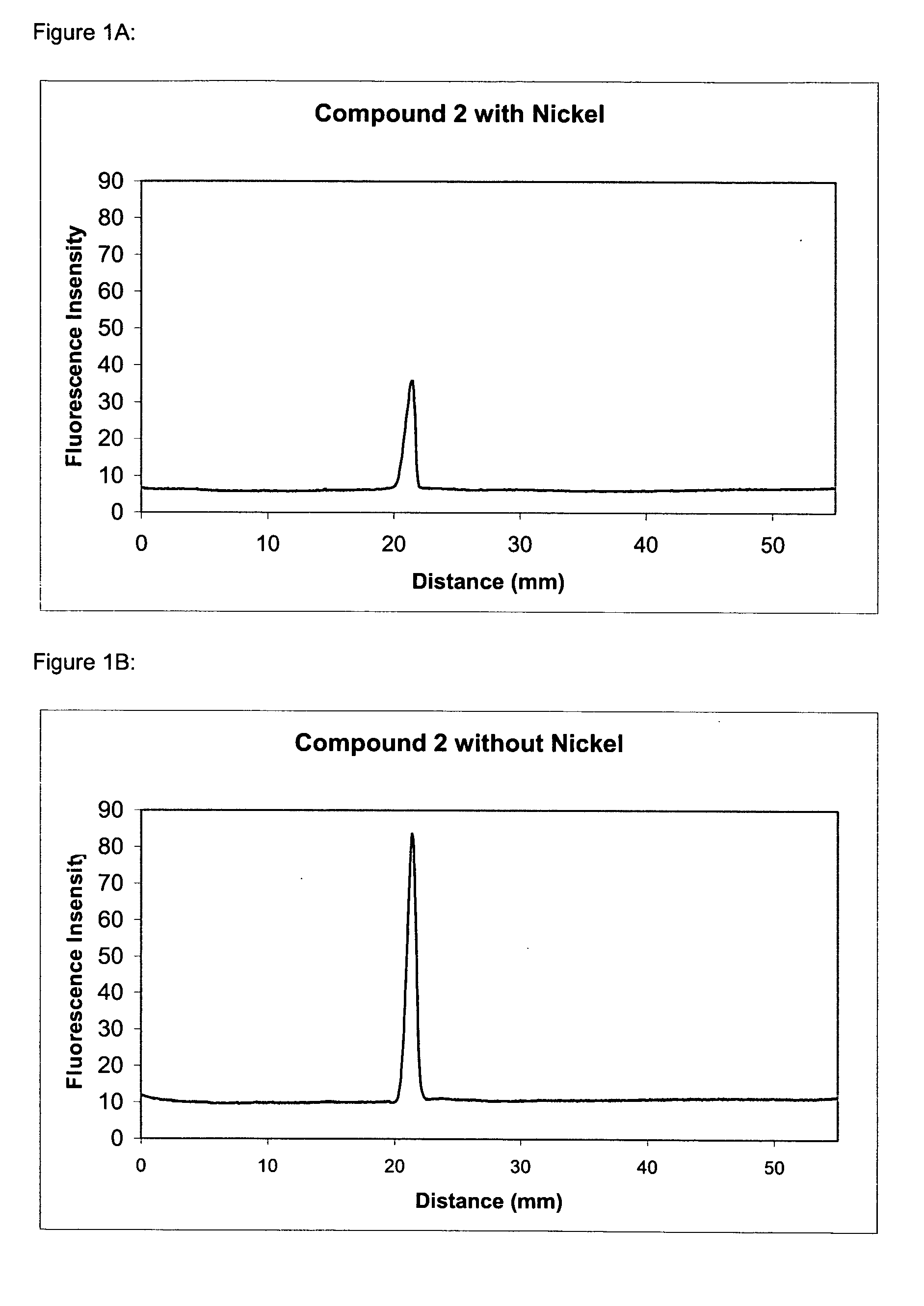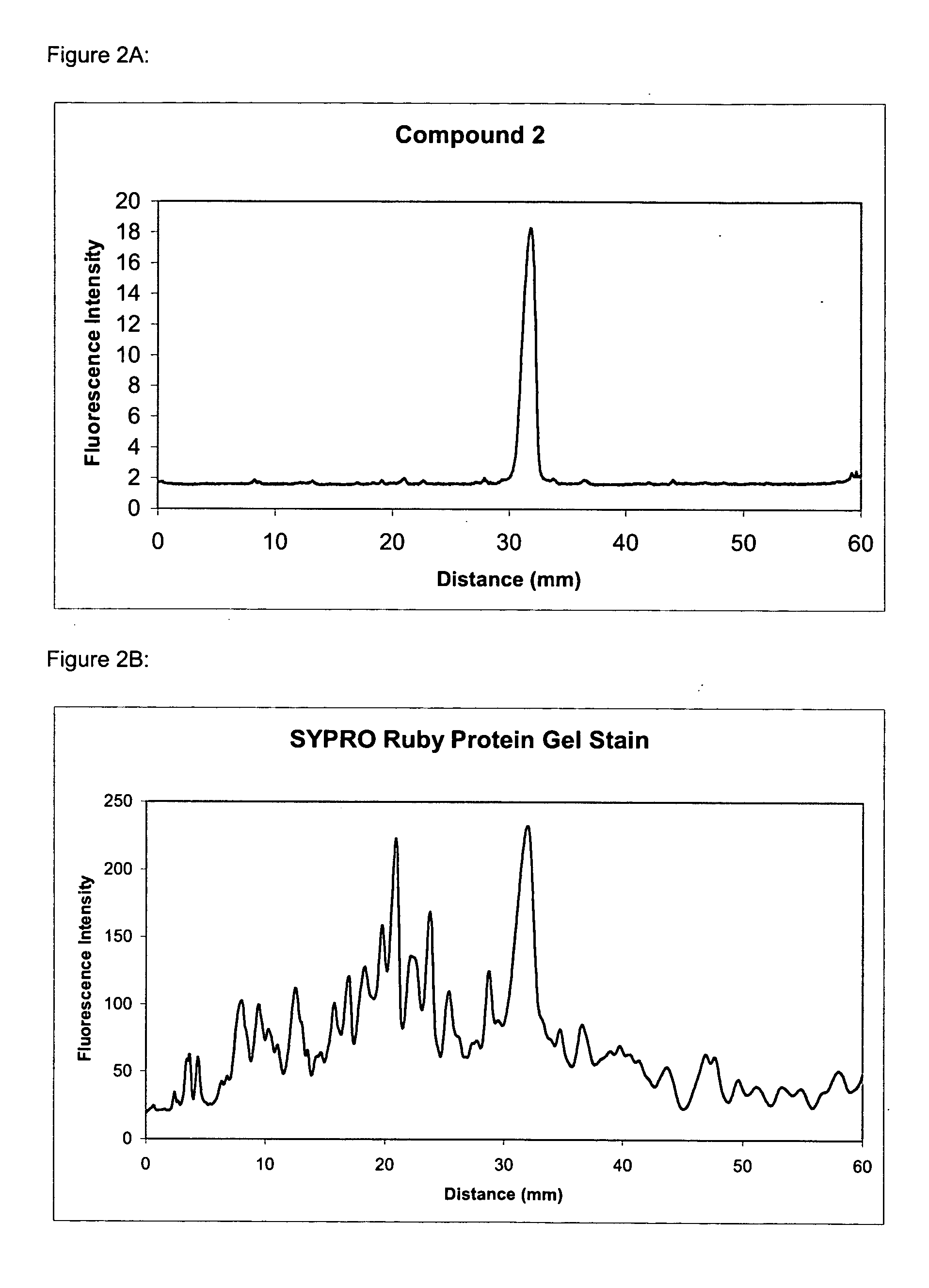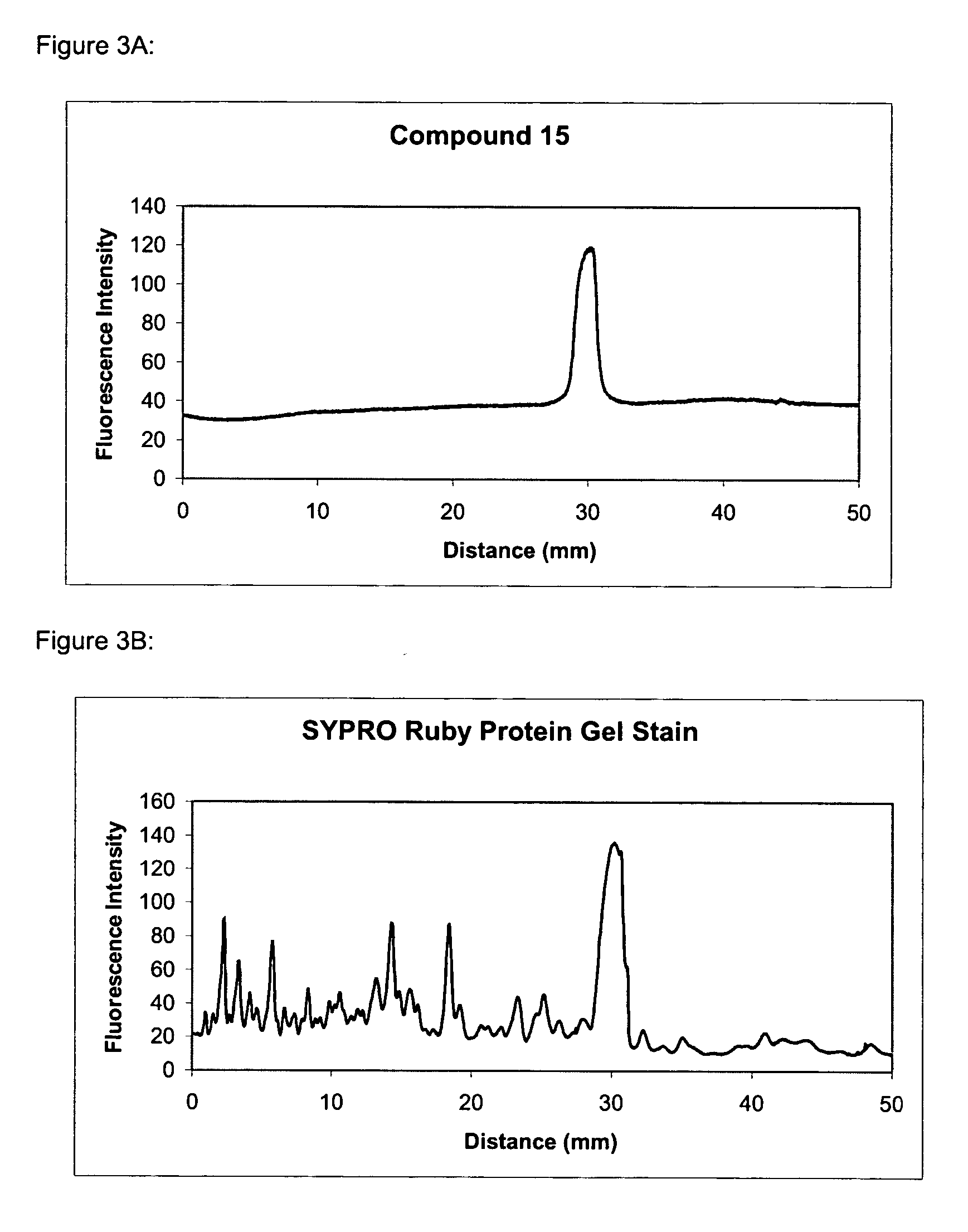Site-specific labeling of affinity tags in fusion proteins
a technology of affinity tags and fusion proteins, which is applied in the field of site-specific labeling of affinity tags in fusion proteins, can solve the problems of multiple time-consuming steps, and achieve the effect of faster kinetics and faster time period
- Summary
- Abstract
- Description
- Claims
- Application Information
AI Technical Summary
Benefits of technology
Problems solved by technology
Method used
Image
Examples
example 1
Synthesis of compound 1 [7-amino-3-(1-carboxy-1-(bis( carboxymethyl)amino)-5-(acetylamino))pentyl-4-methylcoumarin-6-sulfonic acid, tetratriethylammonium salt]
[0261] To a solution of 7-amino-3-((((succinimidyl)oxy)carbonyl)methyl)-4-methylcoumarin-6-sulfonic acid (48 mg, 0.11 mmol) in DMF (3 mL) is added a solution of NTA (34mg, 0.13 mmol) and triethylamine (0.1 mL) in water (1 mL). The mixture is stirred at room temperature for 15 minutes and then concentrated to dryness in vacuo. The crude product is purified on SEPHADEX LH-20, eluting with water to give pure Compound 1 (59.3 mg).
example 2
Synthesis of Compound 2 [4,4-difluoro-4-bora-3a,4a-diaza-s-indacene-3,5-bis((6-(propionyl)amino-2-bis(carboxymethyl)amino)hexanoic acid), hexatriethylammonium salt]
[0262] To a solution of 4,4-difluoro-4-bora-3a,4a-diaza-s-indacene-3,5-dipropionic acid (86 mg, 0.26 mmol) in DMF (2 mL) at 10° C. is added O-succinimidyl-N,N,N′,N′-tetramethyluronium tetrafluoroborate (170 mg, 0.56 mmol) and triethylamine (0.087 mL). The mixture is stirred at 10° C. for 15 minutes and then followed by the addition of a solution of NTA (160 mg, 0.61 mmol) and triethylamine (0.4 mL) in water (2 mL). The mixture is stirred at 10° C. for another 30 minutes and then concentrated to dryness in vacuo. The residue is purified on SEPHADEX LH-20 to give compound 2 (50 mg).
example 2a
Synthesis of Compound 3
[0263] Compound 3 is synthesized similar to Compound 2 but with the starting material 4,4-difluoro-1,3,5,7-tetramethyl-4-bora-3a,4a-diaza-s-indacene-2,6-dipropionic acid.
PUM
| Property | Measurement | Unit |
|---|---|---|
| pKa | aaaaa | aaaaa |
| pKa | aaaaa | aaaaa |
| staining solution | aaaaa | aaaaa |
Abstract
Description
Claims
Application Information
 Login to View More
Login to View More - R&D
- Intellectual Property
- Life Sciences
- Materials
- Tech Scout
- Unparalleled Data Quality
- Higher Quality Content
- 60% Fewer Hallucinations
Browse by: Latest US Patents, China's latest patents, Technical Efficacy Thesaurus, Application Domain, Technology Topic, Popular Technical Reports.
© 2025 PatSnap. All rights reserved.Legal|Privacy policy|Modern Slavery Act Transparency Statement|Sitemap|About US| Contact US: help@patsnap.com



